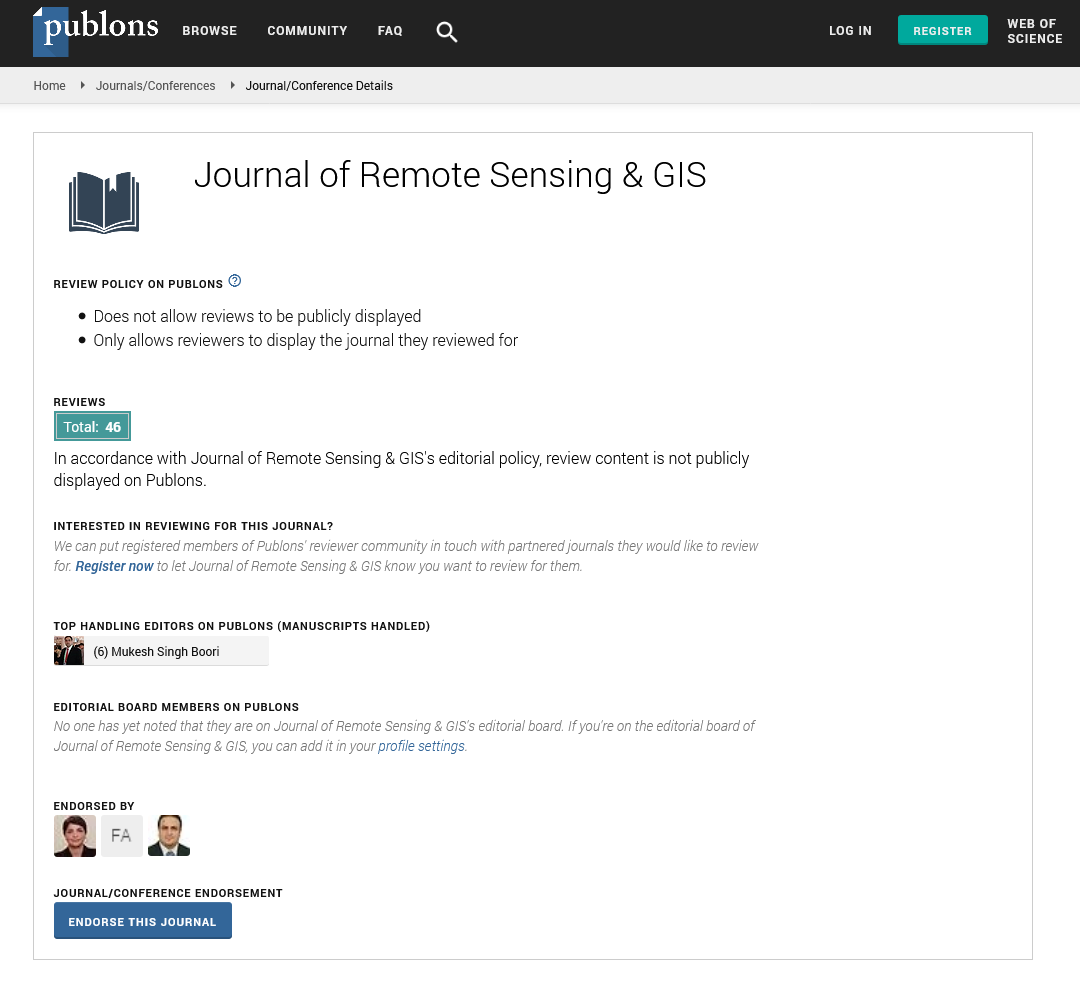Indexed In
- Open J Gate
- RefSeek
- Hamdard University
- EBSCO A-Z
- OCLC- WorldCat
- Publons
- International Scientific Indexing
- Euro Pub
- Google Scholar
Useful Links
Share This Page
Journal Flyer

Open Access Journals
- Agri and Aquaculture
- Biochemistry
- Bioinformatics & Systems Biology
- Business & Management
- Chemistry
- Clinical Sciences
- Engineering
- Food & Nutrition
- General Science
- Genetics & Molecular Biology
- Immunology & Microbiology
- Medical Sciences
- Neuroscience & Psychology
- Nursing & Health Care
- Pharmaceutical Sciences
Enhancements of airborne bathymetric lidar: Mapping the submerged near-shore environment at 4 times the previous point density
5th International Conference on GIS and Remote Sensing
September 16-17, 2019 | Rome, Italy
Tim Webster
Nova Scotia Community College, Canada
Keynote: J Remote Sens GIS
Abstract:
The nearshore zone between the land and deeper water is highly productive, energetic and is challenging to map using traditional land or marine based techniques. Topo-bathymetric lidar (TB-lidar) sensors are well suited to survey this land-sea boundary and provide seamless elevation and imagery across this boundary. The Leica Geosystems Chiroptera II TB-lidar sensor is equipped with NIR and green lasers and 60 MPIX RGB+NIR camera, the Leica Geosystems Chiroptera II, and has been flown for research and commercial missions since September 2014. The turbidity of the water plays a major role in determining how deep the green laser and we utilize a suite of sensors to assist us with assessing water clarity prior to the flight. This approach to turbidity management increases our operational efficiency for successful data collection. In addition to elevation products, near-shore benthic habitat maps and shoreline composition maps can also generated from the airborne sensors. A new processing technique has increased the bathymetric point density by four times compared to previous surveys and an experiment involving deploying 1m X 1 m cubes was conducted in 2018. In addition to generating map and image GIS products, the 3-D point cloud and surfaces are viewed in the virtual reality environment for both quality control and enhanced interpretation of these data. The results on the new 4X processing along with new visualization techniques using mixed and virtual reality systems will be presented during this talk.
Biography :
Tim Webster’s research focus is mapping and modeling processes in the coastal zone. In 2017 he was presented with the Geomatics Association of Nova Scotia Award of Distinction, in 2010 the Gulf of Maine Council Visionary Award. He obtained his PhD from Dalhousie University in 2006, MSc from Acadia in 1996, an Advanced Diploma in Remote Sensing in 1988, and a BSc in 1987. His group has focused on research utilizing an airborne topo-bathymetric lidar sensors where they visualize 3-D data in virtual reality and mixed reality systems to aid in a better understanding of the data and environment.

